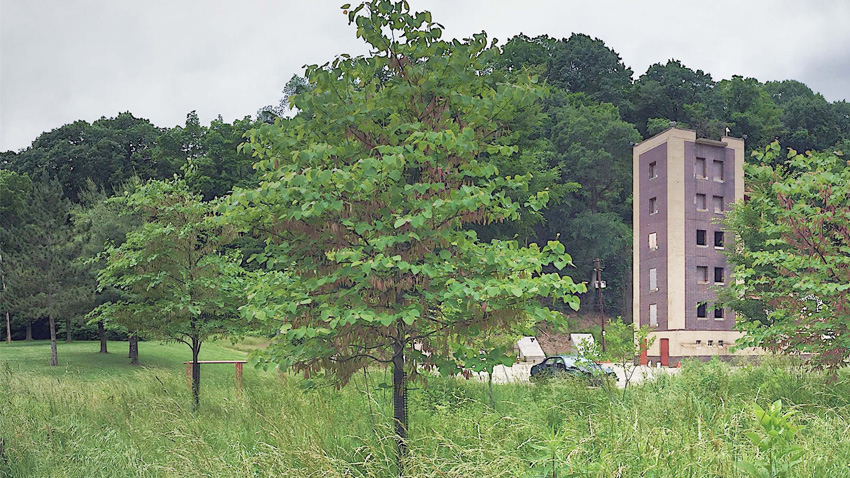
By Diana Nelson Jones
Pittsburgh Post-Gazette
The first, and so far only, green infrastructure solution to flooding in Highland Park’s valleys is completed along Negley Run Boulevard — a 1,100-foot bioswale that will intercept an estimated 600,000 gallons of water running off pavement annually.
It was one of 10 sites identified as optimal for stormwater management in the flood-prone Negley Run and Heth’s Run watersheds when Project 15206 got off the ground in 2014.
Then state Sen. Jim Ferlo teamed up with the Penn State Center and Pittsburgh Community Services to start the project. It was a ZIP code-wide concept to let green infrastructure absorb some of the burden of stormwater runoff, to reduce flooding and sewage overflows into the Allegheny River.
Lisa Vavro, sustainable environments manager for the Penn State Center, said the Negley Run bioswale — along Highland Park’s eastern valley — became the priority as a high-impact site with the most visibility and the most direct link to Washington Boulevard, which floods frequently. An August 2011 flood there killed four people.
The other nine sites originally identified are still either in the planning stages or are no longer in the lineup.
Three are in Heth’s Run, Highland Park’s western valley, below Morningside. Years ago, the Highland Park Community Development Corp. began discussing opportunities to capture water for recreation there with the Pittsburgh Zoo & PPG Aquarium and the Pittsburgh Parks Conservancy.
Conservancy spokesman Scott Roller said conceptual designs are being done now for a soccer field and walking and biking trails, a reconfigured zoo entrance and parking lot, and an Allegheny River overlook.
The redevelopment would include a state-of-the-art stormwater management system that would reduce stormwater runoff and enhance wildlife habitat, he said.
Among the other sites originally identified, one is high above Washington Boulevard in Lemington, which includes federal land. The mix of ownership was too complicated to make it the priority site, Ms. Vavro said. Another site was part of the Centre Avenue traffic reconfiguration in East Liberty.
Four sites are on the properties of the Port Authority of Allegheny County and Chatham University where Fifth Avenue merges with Washington Boulevard.
The team spoke early with Chatham’s facilities manager, but because a parking lot had just been paved, the university decided not to participate, Ms. Vavro said.
Port Authority spokesman Jim Ritchie said early discussions about the project didn’t lead to specific details or funding, but he said, “We are willing to explore that and dip into the details to see how this might work.”
The Port Authority would have to initiate that project, though, because Project 15206 has no more funding.
Construction on the Negley Run bioswale began in the autumn of 2015. City crews excavated the site, rebuilt the curb to be flush with the bioswale and provided other labor.
“We excavated down to create a contour, allowing for 8 inches of ponding, and amended the soil for quick infiltration,” said David Himes, a landscape architect at the Penn State Center.
The soil and plants are held in place by a polyethylene mat of porous, interconnected cells. The webbing material and the plants that grow through it filter impurities out of water. Bioswales are designed to handle rushing water, and more of it, than typical rain gardens, but the role of both is to absorb water.
Mr. Himes designed the bioswale based on a 24,000-square-foot drainage area of impervious surfaces, with enough capacity to accommodate water from future projects. It slopes along the boulevard and ends at a rain garden at Washington Boulevard.
Project 15206 started with a $250,000 county grant, which paid for 400 rain containers for residents in Highland Park and Morningside. Pittsburgh Community Services trained youth workers to install the rain containers.
Penn State Center consultant Matt Graham said that if the containers are properly maintained, they could remove about 2 million gallons of water from the storm sewer system each year.


